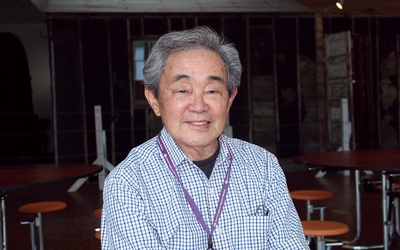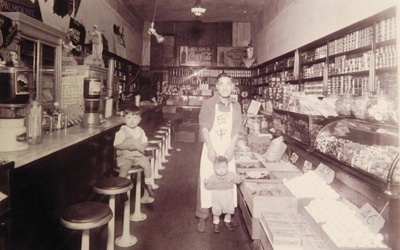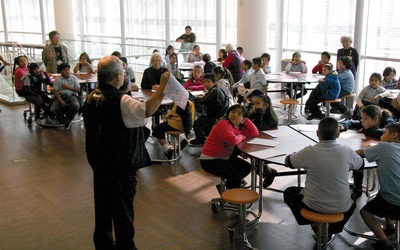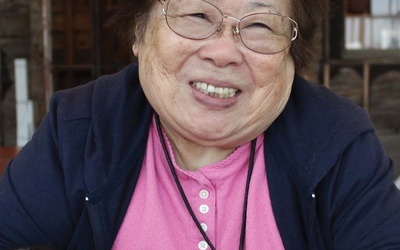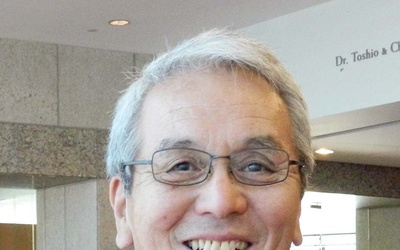Voices of the Volunteers: The Building Blocks of the Japanese American National Museum
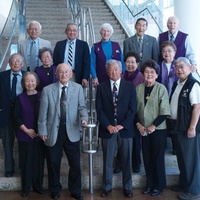
This series introduces the experiences of the volunteers at the Japanese American National Museum from the book Voices of the Volunteers: The Building Blocks of the Japanese American National Museum, which was sponsored by Nitto Tire and published by The Rafu Shimpo.
A few years ago, Nitto Tire began working with the Los Angeles Japanese-language newspaper The Japanese Daily Sun to interview the Japanese American National Museum (JANM)’s volunteers. When Nitto Tire approached The Rafu Shimpo in late 2014 to edit and compile these interviews into a book, we were happy to do it. As a former JANM intern, I knew how important the volunteers were, how hard they worked, and how much their presence humanized history.
In the process of editing this book, I read each story so many times I began to dream about them. I know that I’m not alone in this absorption. Everyone who gave his or her time to this book lived within these stories and felt their effect. That’s the power of a first-hand account.When visitors come to JANM for a guided tour, they experience a similar kind of accelerated intimacy that brings the Common Ground exhibit to life. The volunteers have been putting a face to history for thirty years. For all that time, they have upheld the story of our community. It’s time now for us to uphold their stories.
Edited by Mia Nakaji Monnier with additional thanks to Contributing Editor Chris Komai; Japanese Editors Maki Hirano, Takashi Ishihara, and Ryoko Onishi; and Volunteer Liaison Richard Murakami. Interviews conducted by Tomomi Kanemaru (The Japanese Daily Sun), Alice Hama (The Japanese Daily Sun), and Mia Nakaji Monnier.
Presented by 
Stories from this series
James Michiya Yoshinaga
June 27, 2016 • The Rafu Shimpo
James Yoshinaga was born in 1929 in downtown Los Angeles as the eldest son of a mother from Fukuoka and a father from Kagoshima. His father was from a small land owning family in a farming village, and James’ family moved to Japan temporarily when he was three years old. Upon returning to the U.S., his parents operated a Chinese restaurant in Glendale in the suburbs of Los Angeles. But, in 1937, they moved to Kagoshima again which was intended …
William “Bill” Hiroshi Shishima
June 13, 2016 • The Rafu Shimpo
Bill Shishima grew up eating gohan along with lingua (tongue), seso (brain), and menudo (tripe soup). His father ran a grocery store near Olvera Street, in the Mexican American community of Los Angeles. The store was stocked with items such as chile and masa for tamales. In the store’s kitchen, they made chorizo from leftover scraps. On weekends, Mexican American residents from Chavez Ravine would stop by Bill’s parents’ store to place their orders. Bill’s father would then have a …
Gary Ono
May 23, 2016 • The Rafu Shimpo
Gary Ono’s sunny Little Tokyo apartment is a monument to the things he loves. Behind his dining room table hangs a Japanese illustrative scroll—vintage and yellowing—that shows the Japanese emperors in neat rows leading all the way back to their godly, mythical ancestors, Izanami and Izanagi. On the next wall are calligraphy scrolls, each maybe five feet tall, their dark brushstrokes painted by Mrs. Takeda, the nonagenarian who lived in the apartment before Gary moved in. Farther along the wall, …
Richard Michio Murakami
May 9, 2016 • The Rafu Shimpo
Richard Murakami’s wartime experience was an odyssey that saw his family moved from one camp to another. By the end of WWII, they had lived in three concentration camps—in Tule Lake, California; Jerome, Arkansas; and Heart Mountain, Wyoming. At the outbreak of the war, Richard was living in Lakewood, California, a community with very few Japanese Americans. He recalls that after the Pearl Harbor attack, his hakujin friends advised him not to come to school for a few days. When …
May Fujino
April 25, 2016 • The Rafu Shimpo
May Fujino (1933–2016) enjoyed her time as a volunteer at the Japanese American National Museum. There, she was able to immerse herself in history and improve her Japanese language skills. But being at JANM also reminded May of her early years and how, even during their toughest times, her family knew how to make the best of any situation. May was born in 1933 in Salinas, California as the eldest of 12 siblings. “I was a taisho (general),” she chuckled. …
Yasuyuki Suzuki
April 11, 2016 • The Rafu Shimpo
“Working as a volunteer guide at the Japanese American National Museum is such an interesting experience. I’ve taken a class about the history of Japanese Americans, but there’s no manual for my work. So I have to study constantly,” says Yasuyuki Suzuki. Yasuyuki is one of the volunteer guides at the Japanese American National Museum who give tours around the exhibitions in Japanese. He learned the explanations of the exhibitions by accompanying the Nisei volunteer guides who gave tours in …

